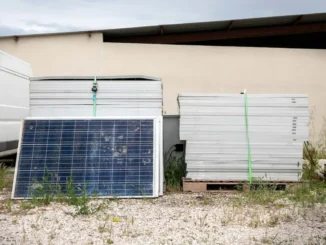
The United States exported 11.9 billion cubic feet per day (Bcf/d) of liquefied natural gas (LNG) in 2024, remaining the world’s largest LNG exporter. LNG exports from Australia and Qatar—the world’s two next-largest LNG exporters—have remained relatively stable over the last five years (2020–24); their exports have ranged from 10.2 Bcf/d to 10.7 Bcf/d annually, according to data from Cedigaz. Russia and Malaysia have been the fourth- and fifth-largest LNG exporters globally since 2019. In 2024, LNG exports from Russia averaged 4.4 Bcf/d, and exports from Malaysia averaged 3.7 Bcf/d.
U.S. LNG exports remained essentially flat compared with 2023 mainly because of several unplanned outages at existing LNG export facilities, lower natural gas consumption in Europe, and very limited new LNG export capacity additions since 2022. In December 2024, Plaquemines LNG Phase 1 shipped its first export cargo, becoming the eighth U.S. LNG export facility in service. We estimate that utilization of LNG export capacity across the other seven U.S. LNG terminals operating in 2024 averaged 104% of nominal capacity and 86% of peak capacity, unchanged from the previous year. While Europe (including Türkiye) remained the primary destination for U.S. LNG exports in 2024, accounting for 53% (6.3 Bcf/d) of the total exports, the share of U.S. LNG exports to Asia increased from 26% (3.1 Bcf/d) in 2023 to 33% (4.0 Bcf/d) in 2024. U.S. LNG exports to other regions, including the Middle East, North Africa, and Latin America, also increased last year and accounted for 14% (1.6 Bcf/d) of total exports, compared with 8% (0.9 Bcf/d) in 2023.
In 2024, U.S. natural gas exports to Europe decreased by 19% (1.5 Bcf/d), mostly to countries in the EU and the UK. U.S. LNG exports increased only to Türkiye and Greece in 2024—by 0.2 Bcf/d and 0.1 Bcf/d, respectively, compared with 2023. Türkiye imported more U.S. LNG compared with the prior year mainly to offset a decline in imports from other countries, such as Egypt and Russia. U.S. LNG exports to other EU countries and the UK decreased by 24% (1.7 Bcf/d) compared with 2023, primarily because of lower natural gas consumption and high storage inventories following the mild 2023–24 winter. At the same time, LNG import capacity in the EU and the UK expanded by more than 40% between 2021 and 2024 and will continue to grow in 2025 once new and expanded regasification facilities in Croatia, Cyprus, and Italy come online.
As in 2023, the Netherlands, France, and the UK imported the most U.S. LNG among countries in Europe, accounting for a combined 46% (2.9 Bcf/d) of the regional total. Since Germany started LNG imports in December 2022, U.S. LNG exports to Germany have grown and averaged 0.6 Bcf/d in both 2023 and 2024. However, in early 2025, Germany reduced its regasification capacity by terminating a charter for one of its floating storage and regasification units, citing high operational costs.
In 2024, countries in Asia imported 33% (4.0 Bcf/d) of total U.S. LNG exports. Among countries in Asia, Japan, South Korea, India, and China imported the most U.S. LNG—a combined 76% (3.0 Bcf/d). U.S. LNG imports increased the most in India—by 0.2 Bcf/d. Other countries in Asia imported 24% (1.0 Bcf/d) of U.S LNG.
In other regions, Egypt—a natural gas producer and LNG exporter—imported 0.3 Bcf/d of LNG from the United States, its first U.S. LNG imports since 2018. In recent years, Egypt’s domestic natural gas consumption, particularly in summer months, exceeded available supply and turned Egypt from an exporter to an importer of natural gas during several months of the year. In Brazil and Colombia, imports of U.S. LNG increased last year because drought reduced hydropower electricity generation and increased demand for generation from natural gas-fired power plants.







